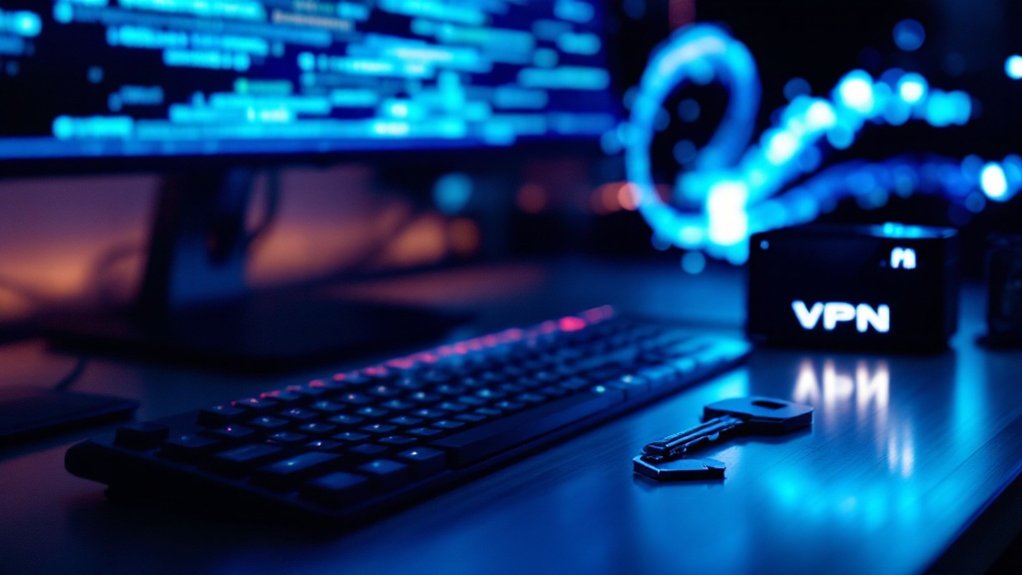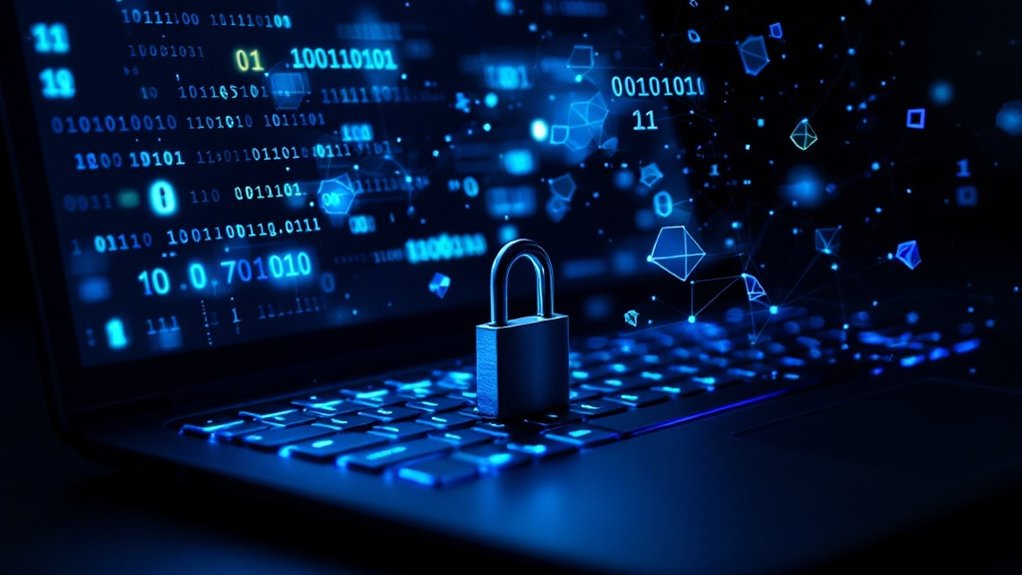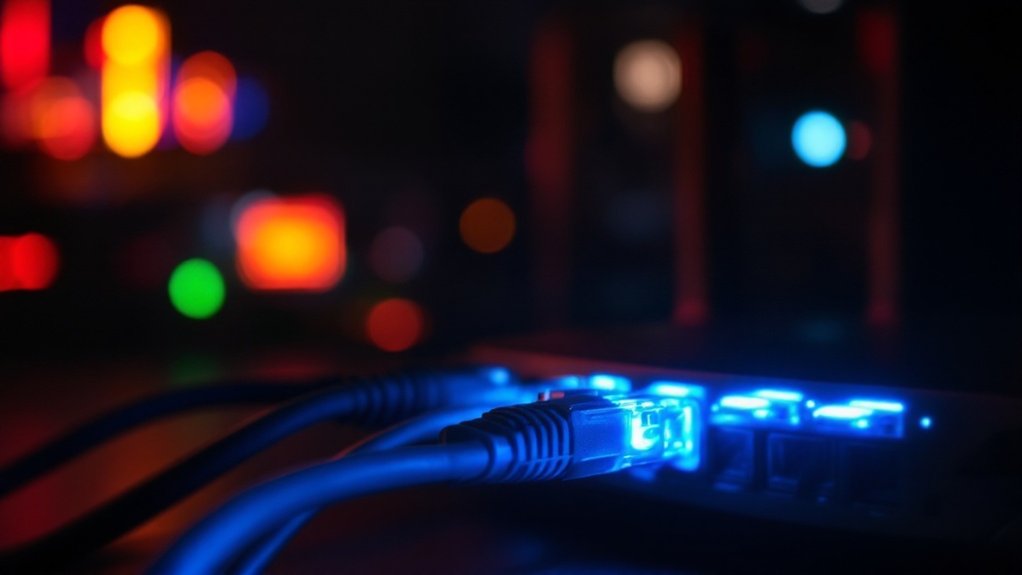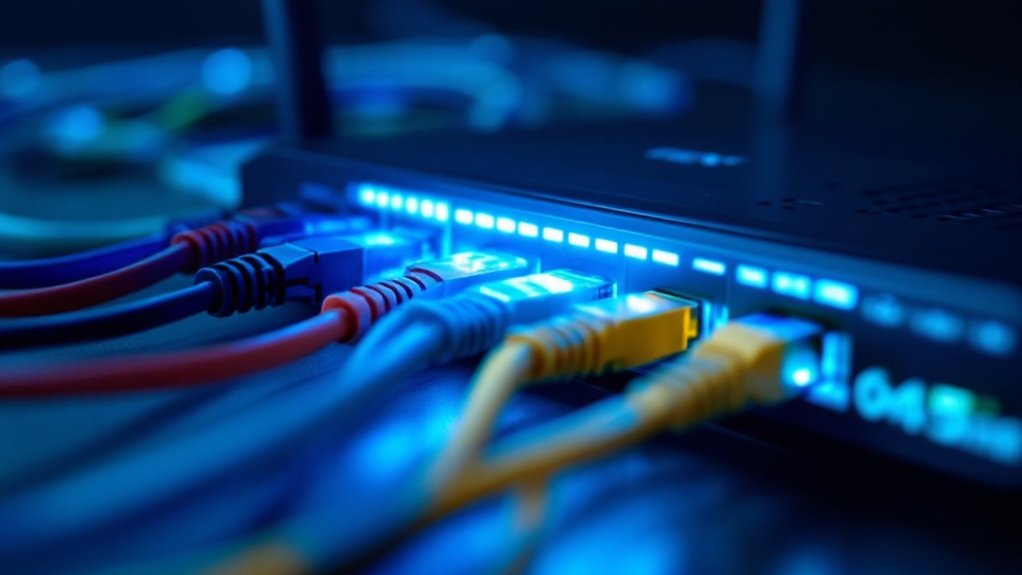Creating an anonymous email requires selecting secure providers like ProtonMail or Tutanota that offer end-to-end encryption, implementing strong 12+ character passwords with mixed characters, and using VPNs to mask IP addresses. Users should register without personal information, employ two-factor authentication, and regularly delete messages to maintain privacy. Additional security measures include metadata removal from attachments and utilizing the Tor Browser for improved protection. Further exploration reveals advanced techniques for maximizing email anonymity.

In an era of increasing digital surveillance and data collection, creating an anonymous email account has become essential for individuals seeking to protect their privacy online. Security experts recommend utilizing secure email providers that prioritize user privacy, with services like ProtonMail and Tutanota offering end-to-end encryption and the ability to register without personal information. These providers serve as the foundation for establishing a truly private communication channel. The cost of premium anonymous email services typically ranges from $25 to $80 annually.
The implementation of supplementary security measures greatly improves email anonymity. Using a Virtual Private Network (VPN) masks the user’s real IP address, with providers like NordVPN and ExpressVPN offering extensive server networks across multiple countries. The Tor Browser further boosts privacy by routing internet traffic through multiple servers, making it virtually impossible for websites to track user location and browsing habits. Anonymous communication has become crucial for journalists and whistleblowers who need to protect sensitive information and sources. Temporary email services provide an additional layer of privacy for one-time communications.
Strong password creation represents a vital component of email security. Experts advocate for passwords containing a minimum of 12 characters, incorporating a mix of upper and lowercase letters, numbers, and symbols. Password managers facilitate the generation and secure storage of complex credentials, while two-factor authentication adds an extra layer of protection against unauthorized access.
File security demands equal attention when maintaining email anonymity. Before sending attachments, users must remove metadata using specialized tools that strip EXIF data from images and reduce embedded information in documents. Converting files to PDF format and verifying their properties after cleaning guarantees the complete removal of potentially identifying information.
The implementation of PGP encryption provides end-to-end security for email content, requiring users to generate unique key pairs and exchange public keys with intended recipients. This encryption protocol guarantees that message content remains protected from unauthorized access.
Furthermore, practicing safe email habits, such as avoiding links to personal accounts and regularly deleting messages, maintains long-term anonymity. Users should likewise utilize different anonymous email addresses for various purposes, logging out after each session and remaining vigilant against phishing attempts.
Frequently Asked Questions
Can Law Enforcement Track Anonymous Email Accounts?
Law enforcement can track anonymous email accounts through various investigative methods, including court-ordered IP traces, metadata analysis, and provider cooperation.
Nevertheless, their success depends on the anonymity techniques employed. Whereas basic anonymous accounts may be traceable through digital footprints, accounts using encrypted services, Tor networks, or sophisticated proxy chains present significant challenges for investigators.
This often requires extensive resources and international cooperation to unravel.
How Often Should I Change My Anonymous Email Password?
According to current NIST guidelines, anonymous email passwords should only be changed when there is evidence of compromise rather than on an arbitrary schedule.
Frequent mandatory changes often lead users to create weaker, predictable variations of previous passwords.
Nevertheless, immediate password changes are crucial if suspicious activity occurs, unauthorized access is detected, or the password appears in data breach notifications.
Multi-factor authentication provides additional security beyond password management alone.
What Happens if My Anonymous Email Provider Shuts Down Permanently?
When an anonymous email provider shuts down permanently, users face immediate loss of access to their messages, contacts, and stored data.
Significant consequences include the permanent deletion of unbackuped communications, potential exposure of user identities, and disruption of communication channels.
To mitigate risks, users should maintain regular local backups, implement personal encryption, and establish accounts with multiple providers during having a ready migration strategy for crucial communications.
Should I Use a VPN When Accessing My Anonymous Email Account?
Using a VPN is strongly recommended when accessing anonymous email accounts, as it provides crucial layers of security and privacy protection.
The VPN masks the user’s IP address, encrypts internet traffic, and prevents ISP monitoring of email activities.
Although VPNs may slightly reduce connection speeds, their benefits in protecting against surveillance and man-in-the-middle attacks outweigh potential drawbacks, particularly when handling sensitive communications through anonymous email services.
Can I Recover My Anonymous Email if I Forget Login Credentials?
Recovering anonymous email credentials presents significant challenges because of limited verification options.
Most standard recovery methods, including phone verification and alternate email recovery, may be unavailable because of the anonymous nature of the account.
Users can implement preventive measures by storing credentials in encrypted offline files, utilizing multiple anonymous backup accounts, or maintaining secure password managers.
Conversely, if all recovery methods fail, regaining access may be impossible.









